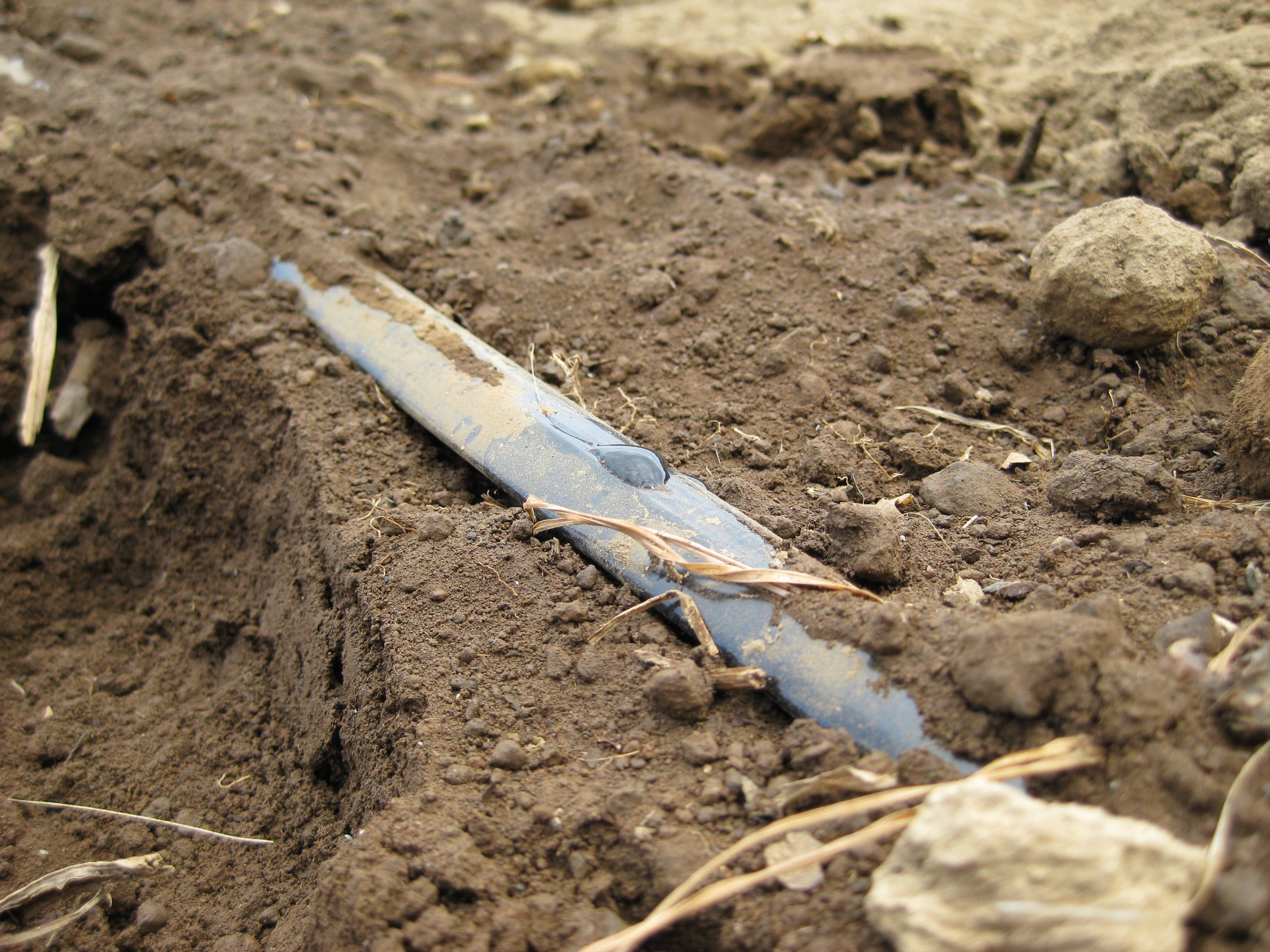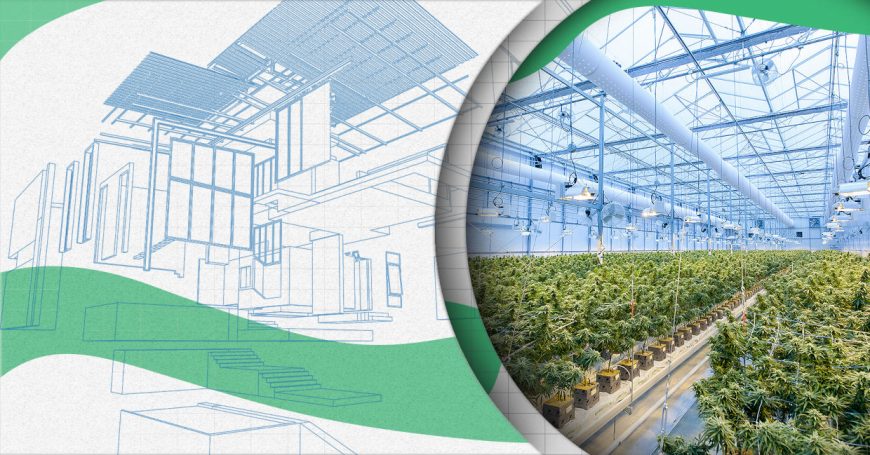What steps should you take to set up your commercial greenhouse for cannabis?
What are Commercial Cannabis Greenhouses?
Commercial greenhouses are constructed from metal frames and covered with translucent plastic film that provide enclosure. Commercial greenhouses can be equipped with vents, shades, irrigation systems, and lighting, to name a few from the many Cannabis SOPs (cannabis standard operating procedures) that we have designed. Greenhouse crops may be grown in containers, benches, or in soil if there is no foundation.
Greenhouses can deliver highly controlled optimal growing conditions for plants and protect them from environmental hazards or inhospitable conditions outside while operating at lower costs than commercial grow rooms.
Designing a commercial greenhouse for cannabis takes science, engineering, and technology. Commercial greenhouses allow cannabis growers to cultivate crops all year round. Commercial greenhouses can contain pollen and reduce exposure to the elements which makes them useful for cannabis nurseries and breeding.
Commercial greenhouses can't be built from DIY greenhouse kits. They require meticulous planning, building permits, and proper zoning. The success or failure of a commercial cannabis greenhouse depends on being prepared to face these costs and challenges.
Greenhouses can deliver highly controlled optimal growing conditions for plants and protect them from environmental hazards or inhospitable conditions outside while operating at lower costs than commercial grow rooms.
Eight Steps for Setting Up a Commercial Greenhouse for Cannabis
It is difficult to predict the success of outdoor crops. There is a limited amount of land that is able to support crops like cannabis. In addition to land scarcity, outdoor crops face challenges like unpredictable weather, seasonal climate variation, and water supply.
Cannabis is challenging to grow on an industrial scale. Greenhouses offer the ability to meticulously control your environment, with lower resource usage than a constructed warehouse-like grow facility. Greenhouses also offer better security than outdoor crops, and make it easier to implement Health Canada's GPP and GMP Guidelines for Cannabis Compliance requirements.
The University of Massachusetts publishes an extensive guide to Greenhouse Best Management Practices. Here are some of the key steps they identify in setting up commercial greenhouses:
1. Commercial Greenhouse Site Selection
Not all sites are suitable locations for commercial greenhouses. Many considerations need to be made when looking for a site to build a greenhouse:
- Geography (hills vs flat land)
- Light Exposure
- Water Supply
- Electricity Supply
- Waste Management
- Energy and Land Conservation
- Building Code and Local Ordinances
Building sites can influence the shape and orientation of the greenhouse. Commercial greenhouses that have a shape that follows the slope of the surrounding area have reduced heating needs.
East-west facing greenhouses also require less heating when compares to north-south facing structures. At all latitudes, east-west oriented greenhouses provide the best year round light exposure. It is important to consider the orientation of a greenhouse on a site because light exposure will also be influenced.
The National Greenhouse Manufacturers Association offers additional guidance on greenhouse building and design standards.
2. Type of Commercial Greenhouse to Build
Commercial greenhouses come in a variety of shapes and sizes. The shape and orientation of a greenhouse are important features that influence crop success and operational efficiency.
Commercial greenhouses are described by their height and roof shape. Each roof shape imparts unique qualities on the greenhouse environment.
Asymmetric and pitched roof shapes allow for greenhouses to simulate surrounding geography. Uneven roof shapes are ideal if a location is at high latitude or on uneven land.
Flat arched greenhouses have more stable temperatures than gabled greenhouses, but require active ventilation.
Domed roofs can withstand high winds and provide highly stable environments but are very costly to build and heat.
Common Greenhouse Shapes
- Multi-span
- Single-span
- Gothic
- Dome
- Quonset
- Gabled
- Semi Gabled
- Flat Arch
3. Choosing Greenhouse Glazing

4. Lighting Considerations for Commercial Greenhouses
Glazing is a material that is stretched over the frame of a greenhouse. It comes in a variety of materials that will influence the lighting and temperature inside the greenhouse.
Radiation from the sun passes through the greenhouse glazing and transmits heat and light. Glazing material need to let short waves of light through and block long waves that can be damaging. Opaque glazing offers more light filtration than clear glazing.
Polyethylene and polycarbonate glazing may discolor over time from UV exposure. Glazing made of polycarbonate eventually needs to be replaced but is overall very resistant to potential environmental damage. Glazing with higher R-values has better insulation.
|
Glazing Material |
R-Value |
Light Diffusion |
Lifespan |
|
Glass |
0.95 (single pane) |
No diffusion |
Impact and scratch resistant, lasts 30 years or more |
|
Fiberglass |
0.85 |
Moderate |
Resists corrosion and chemicals, warping, thermal expansion, may yellow with UV exposure over several years |
|
Polyethylene Film |
0.85 (single pane) |
Semi-diffused |
Inexpensive, easy to replace, good for large greenhouses, needs replacement every few years |
|
Polyethylene Sheeting |
2.1-2.3 |
Diffused |
Lightweight, stiffer than film and better insulation, UV resistant |
|
Polycarbonate |
1.43-1.89 (2 ply) 2.0-2.1 (3 ply) |
Diffused |
Light but durable, light transmission degrades from UV discolouration, lasts 15+ years, difficult to use with curved designs |
Cannabis plants are very dependent on light cues. Without the right lighting plants may flower too early, not at all, or may turn hermaphrodite. Supplemental lighting may be installed inside greenhouses to ensure that plants receive consistent levels throughout the year.
18 to 24 hours of 70 watts per meter PAR (photosynthetically active radiation) is needed to ensure cannabis plants get enough light during shorter winter months.
|
Bulb Type |
Light Color |
Use |
Lifespan |
|
Metal Halide |
Blue, 450-470 nm |
Primary Lighting, Leafy Plants |
~10,000 hours |
|
High Pressure Sodium |
Orange-Red, 590-650 nm Full Spectrum Available |
Secondary Lighting, Budding and Flowering |
~18,000 hours |
|
Fluorescent (CFL or T5) |
2700k-3000k: High Red 5000k: Full Spectrum 6500k: Blue |
Vegetative or Flowering (depending on type), Low Heat |
~20,000 hours |
|
Incandescent |
White Light/Daylight, Some Red |
Inefficient, Supplement Lighting |
~750-2500 hours |
|
LED |
Customizable |
Primary Lighting, High Efficiency, Low Heat, Dimmable |
~50,000 hours |
5. Ventilation for Cannabis Greenhouses
Commercial greenhouse ventilation is important. Plants need fresh air to replenish carbon dioxide levels and ensure it does not get too hot. Natural, or "passive," ventilation can be provided by installing vents and roll-up side curtains. Exhaust fans and circulatory fans can be installed to provide active ventilation.
Greenhouse shutters used with fans. Shutters need to be sized appropriately to the fan size. Shutters also need to be open when fans are running and closed when they are off.
Additional features like evaporative cooling pads can provide further cooling during hot summer months. Commercial cannabis greenhouses may also require scrubbers in their ventilation system. Scrubbers are utilized to diffuse and reduce odours.
6. Blackout Systems for Cannabis Greenhouses
Blackout systems are needed in commercial cannabis greenhouses. These systems are made of opaque material and can be manually or automatically operated.
Plastic blackout cloth should be avoided because it can trap heat. Heat delay can significantly damage cannabis crops, especially in warm summer months.
Automated blackout curtain systems are ideal for commercial cannabis greenhouses. It takes a lot of labour and time to manually pull curtains through the greenhouse. Delays and inconsistencies in timing can also be damaging to plants.
Without a firm understanding of local water quality, your cannabis plants may suffer through nutrient lock or other deficiencies.

Irrigation design and system planning is one of the most critical parts of setting up your cannabis greenhouse for success.
7. Water Sources for Irrigation
Commercial greenhouses need to have consistent access to good quality water. Wells and city water are very high quality but can be expensive. Some greenhouses use water treatment systems to reclaim and treat water.
Regardless of water source, it is vital to test the water quality. This means knowing the mineral levels that are present, checking for heavy metals, and checking for microbial contaminants.
Proper water testing is important for health and hygiene. It is also critical to crop success to know what minerals are present in irrigation water. Many nutrient solutions used in cannabis cultivation can be altered by the mineral content of the water they are dissolved in. Without knowing the quality of the water crops could encounter nutrient lock or other deficiencies.
Cultivation software like GrowerIQ can help manage commercial cannabis greenhouses.
8. Commercial Greenhouse Technology for Cannabis
Setting up a commercial greenhouse for cannabis is no easy task. Operating a commercial cannabis greenhouse can take immense amounts of hard manual labour. With labour being expensive and sometimes difficult to find, it pays to invest in commercial greenhouse technology.
Controller boxes are a simple technology that allows greenhouse equipment to be managed in a central location. Controller boxes can connect ventilation fans, blackout curtain systems, and lighting to timers and sensors.
Cultivation software like GrowerIQ can help manage commercial cannabis greenhouses. GrowerIQ can connect to sensors and controllers so fewer staff are needed to monitor greenhouse conditions. Cultivation software makes it easy for growers to respond to the changing greenhouse environment quickly, all while maintaining detailed records of activities to support GACP and GMP cultivation and production activities.
Commercial Greenhouse Energy Efficiency
A cannabis greenhouse management system needs to have special focus on climate control, security, and sanitation. None of these features comes cheap, so commercial cannabis greenhouses also need to operate very efficiently.
Efficient commercial greenhouses utilize optimal lighting, ventilation, and heating that is customized to their specific location. Efficient irrigation systems like drip tape also help conserve water use. Ultimately the most efficient commercial cannabis greenhouses embrace technology.
Precise control of greenhouse climate is important for conserving energy and water. In order to achieve the most efficient resource use it is also very important to maintain the greenhouse well.
Simple steps like making sure that cracks are filled and maintaining the landscaping around the greenhouse can help increase efficiency and avoid pests. Here are some other areas to maintain for optimal resource usage:
- Close small gaps and holes in the greenhouse walls
- Weatherstrip doors, windows and ventilation openings
- Seal the greenhouse foundation perimeter where most air loss occurs
- Properly adjust and lubricate automated devices
- Shut off exhaust fans and shutters when not in use
- All doors and windows should close and fit properly
Precision Hydronic Management for Cannabis Greenhouses
Hydronic management methods for commercial greenhouses help balance climate and water use. This is achieved by calculating a target average temperature for a 24 hour period. By considering the high and low temperatures for the day the temperature where energy loss occurs can be found.
Heat loss from cooler temperatures is balanced by setting the irrigation water temperature to the average daily temperature. This practice also helps keep plants cool during the day and helps regulate the overall commercial greenhouse climate.
Reviewing Steps for Commercial Greenhouse Set Up
It takes a lot of time and money to set up a commercial greenhouse for cannabis. Systems and technology for precision management of commercial greenhouses is expensive but pay off long term.
To review, here are the major steps to take to set up a commercial greenhouse:
- Select a site with good access to resources
- Design a greenhouse structure with geography and efficiency in mind
- Equip the commercial greenhouse with the most efficient features possible
- Utilize technology and precision management strategies to ensure efficient greenhouse operation
- Maintain the greenhouse and surrounding landscape well to prevent deterioration and pests
- Employ cultivation software to plan crops and gain insights from collected data
Find Out More
Let's discuss your project in order to customize a commercial cannabis greenhouse design that best supports your needs. Find out more about our cannabis greenhouse design services by connecting with our experts. Fill in the form below or chat with us to the right to get started.
About GrowerIQ
GrowerIQ is changing the way producers use software - transforming a regulatory requirement into a robust platform to learn, analyze, and improve performance.
To find out more about GrowerIQ and how we can help, fill out the form to the right, start a chat, or contact us.

